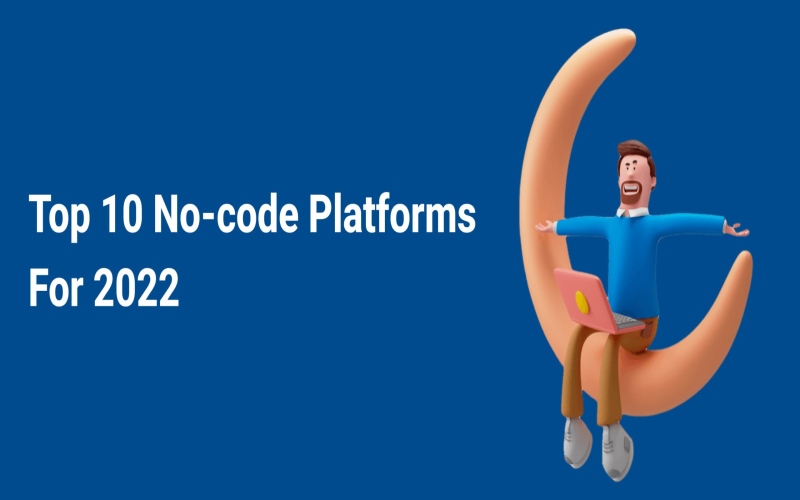No-code platforms are revolutionizing web design by providing users with the ability to create stunning websites without the need for coding skills. In this article, we will explore the best no-code platforms for template web design, comparing Webflow and Framer, and highlighting the best templates available for each platform.
Key Takeaways
- No-code platforms empower users to create professional websites without coding skills.
- Webflow and Framer offer distinct features and interfaces for template web design.
- Framer templates are known for their modern, minimalist, and interactive designs.
- Webflow templates excel in responsiveness, e-commerce support, and creative themes.
- No-code web design opens up opportunities for individuals and businesses to create visually appealing websites.
Introduction
What is No-Code?
No-Code refers to the use of visual development tools to create applications and websites without the need for traditional programming. It’s all about drag-and-drop, point-and-click, and no coding required. Platforms like Webflow and Framer are leading the way in no-code web design, offering a range of templates and design tools to make website creation accessible to everyone. Speaking of templates, let’s take a look at the best framer templates:
Why Use No-Code Platforms?
No-code platforms like Webflow and Framer offer a hassle-free way to create stunning websites without the need for coding skills. With Webflow and Framer, you can easily design and customize websites using intuitive drag-and-drop interfaces. These platforms provide a wide range of best framer templates and Webflow templates to kickstart your design process. Additionally, they enable you to focus on the creative aspects of web design, making it easier and faster to bring your ideas to life. Check out the comparison table below to see the key features of these platforms.
Overview of No-Code Web Design
No-Code web design is all about creating websites without writing a single line of code. It’s like building with digital Legos! Two popular platforms for no-code web design are Webflow and Framer. If you’re looking for the best framer templates, you’ll find modern and minimalist goblueshield17 designs, interactive and dynamic layouts, and customizable components. These templates are perfect for creating stunning websites without the need for coding skills. Check out the comparison table below:
| Feature | Framer Templates | Webflow Templates |
| Flexibility | High | Medium |
| Customization | Extensive | Limited |
| Learning Curve | Low | Medium |
Note: Framer Templates offer high flexibility and extensive customization options.
No-Code web design is all about creativity and ease of use. With the right templates, you can bring your vision to life without touching a single line of code.
Webflow vs Framer
Comparison of Features
Webflow and Framer are two of the most popular no-code platforms for web design. When it comes to features, Webflow excels in its user-friendly interface, making it a great choice for beginners. On the other hand, Framer stands out with its advanced interactive capabilities, making it ideal for more experienced designers. For the best framer templates, Framer offers a wide range of modern and minimalist designs, interactive and dynamic layouts, and customizable components. Here’s a quick comparison of the two platforms:
| Feature | Webflow | Framer |
| User-Friendly | Yes | No |
| Interactive | Limited | Advanced |
| Templates | Varied and Creative | Modern and Minimalist |
In summary, Webflow is great for its ease of use, while Framer shines with its advanced design capabilities.
Pros and Cons
Webflow and Framer are both powerful no-code platforms for web design. Webflow’s user-friendly interface makes it a great choice for beginners, while Framer’s interactive and dynamic layouts offer advanced customization options for experienced designers. In terms of templates, Webflow offers a wide range of responsive and mobile-friendly designs, including e-commerce and creative themes. On the other hand, Framer provides modern and minimalist designs that are perfect for creating unique and artistic websites. Check out the table below for a quick comparison of the two platforms:
| Feature | Webflow | Framer |
| User-Friendly | Yes | No |
| Customization | Limited | Extensive |
| Template Variety | Wide range | Modern and minimalist |
Webflow is the go-to choice for those looking for a wide variety of templates, while Framer stands out with its extensive customization options and modern designs.
Both platforms have their strengths and weaknesses, so it’s important to consider your specific needs and design preferences when choosing the best fit for your project.
User-Friendly Interface
Hey there! When it comes to user-friendly interfaces, both Webflow and Framer have a lot to offer. But if you’re looking for the best framer templates, Framer’s got some seriously cool options. From modern and minimalist designs to interactive and dynamic layouts, you can find a template that suits your style. Plus, the customizable components make it easy to create something unique. Take a look at the table below for a quick comparison of the features.
| Feature | Framer Templates | Webflow Templates |
| Ease of Use | High | Medium |
| Customization | Extensive | Limited |
And don’t forget, with Framer, you have the freedom to bring your wildest design ideas to life. So, why settle for ordinary when you can have extraordinary?
Best Framer Templates
Modern and Minimalist Designs
If you’re looking for the best Framer templates, you’ll find a range of modern and minimalist designs that are perfect for sleek and stylish websites. These templates are designed to be both visually appealing and user-friendly, making them a great choice for anyone using Framer for their web design projects. Check out the table below for a quick comparison of Framer and Webflow.
| Feature | Framer | Webflow |
| Flexibility | High | Moderate |
| Learning Curve | Low | Moderate |
| Interactivity | Advanced | Basic |
When it comes to creating a clean and elegant website, these modern and minimalist designs are a top choice. They offer a sleek and professional look that’s perfect for showcasing your content in a stylish manner.
Interactive and Dynamic Layouts
*When it comes to creating interactive and dynamic layouts, both Webflow and Framer offer some impressive options. While Webflow provides a wide range of responsive and mobile-friendly templates, Framer stands out with its framer templates that are known for their customizable components and modern and minimalist designs. Check out the table below for a quick comparison of the two platforms:
| Feature | Webflow | Framer |
| Customization | Limited | Extensive |
| Ease of Use | User-Friendly Interface | Learning Curve |
Here’s a quick comparison of the two platforms:
- Webflow: Known for its responsive and mobile-friendly
- Framer: Stands out with its best framer templates and customizable components.
Both platforms have their strengths, so it’s important to consider your specific needs when choosing the right one for your project.
Customizable Components
After exploring the Customizable Components of Framer, it’s clear that this platform offers a wide range of design options. With its user-friendly interface and powerful features, Framer stands out as one of the best framer templates for creative and dynamic web design. The flexibility and customization options make it a top choice for designers looking to create unique and interactive websites. Check out the table below for a quick comparison of Framer and Webflow.
| Feature | Framer | Webflow |
| Ease of Use | User-friendly interface | Intuitive design tools |
| Flexibility | Customizable components | Responsive layouts |
| Interactivity | Dynamic animations | Interactive elements |
Explore the possibilities of Framer’s templates and unleash your creativity!
Best Webflow templates
Responsive and Mobile-Friendly Designs
Hey there! If you’re looking for the best Framer templates, you’ve come to the right place. Webflow and Framer are two of the top platforms for no-code web design. With responsive and mobile-friendly designs, you can create stunning websites that look great on any device. Check out the table below for a quick comparison of the features.
| Feature | Webflow | Framer |
| User-Friendly | Yes | Yes |
| Customizable | Yes | Yes |
Whether you’re a beginner or an experienced designer, these platforms offer a wide range of options to bring your vision to life. Give them a try and see for yourself!
E-commerce and Business Templates
When it comes to E-commerce and Business Templates, both Webflow and Framer offer a wide range of options. Webflow stands out with its Responsive and Mobile-Friendly Designs, while Framer excels in Interactive and Dynamic Layouts. In addition, Webflow provides a variety of Creative and Artistic Themes that are perfect for businesses looking to make a statement. Check out the table below for a quick comparison of the two platforms:
| Feature | Webflow | Framer |
| User-Friendly Interface | Yes | Yes |
| Customizable Components | Yes | Yes |
| Pros and Cons | Webflow: Easy to use, Framer: Great for prototyping | Webflow: Limited interactions, Framer: Steeper learning curve |
Both platforms have their strengths, so it really comes down to the specific needs of your project.
Creative and Artistic Themes
If you’re looking for Creative and Artistic Themes, both Webflow and Framer offer a range of visually stunning templates to bring your website to life. With Framer’s best templates, you can create interactive and dynamic layouts that are sure to impress. On the other hand, Webflow provides a variety of responsive and mobile-friendly designs perfect for showcasing your creative work. Whether you’re a designer, artist, or creative professional, these platforms have got you covered. Check out the comparison table below to see how they stack up.
| Feature | Framer Templates | Webflow Templates |
| User-Friendly Interface | Yes | Yes |
| Customizable Components | Yes | Yes |
| Interactive Layouts | Yes | No |
Remember, the best platform for you ultimately depends on your specific needs and preferences. So take your time to explore and find the perfect fit for your creative vision.
Frequently Asked Questions
What is No-Code?
No-Code refers to the use of visual development tools to create applications, websites, or software without the need for traditional programming or coding skills.
Why Use No-Code Platforms?
No-Code platforms allow users to build websites and applications quickly and easily, without the need for technical expertise. They are ideal for entrepreneurs, small businesses, and individuals who want to create professional-looking designs without hiring a developer.
What are the Benefits of No-Code Web Design?
No-Code web design offers flexibility, speed, cost-effectiveness, and the ability to iterate and make changes easily. It empowers non-technical users to create custom designs and functionality without writing a single line of code.
How does Webflow compare to Framer?
Webflow and Framer are both powerful no-code platforms, but they have different strengths. Webflow is known for its robust visual design features and e-commerce capabilities, while Framer excels in creating interactive and animated prototypes.
Are No-Code Platforms Suitable for E-commerce Websites?
Yes, many no-code platforms offer e-commerce functionality, allowing users to create online stores, manage products, process payments, and more without writing code. This makes them suitable for building e-commerce websites.
Can No-Code Platforms Create Mobile-Friendly Designs?
Absolutely! No-Code platforms provide responsive design tools that enable users to create mobile-friendly and responsive web designs without the need for coding skills.

